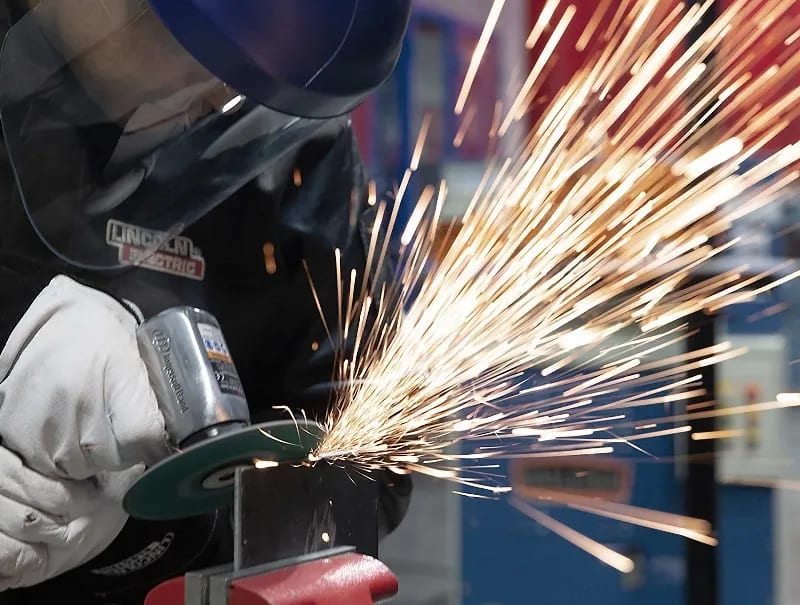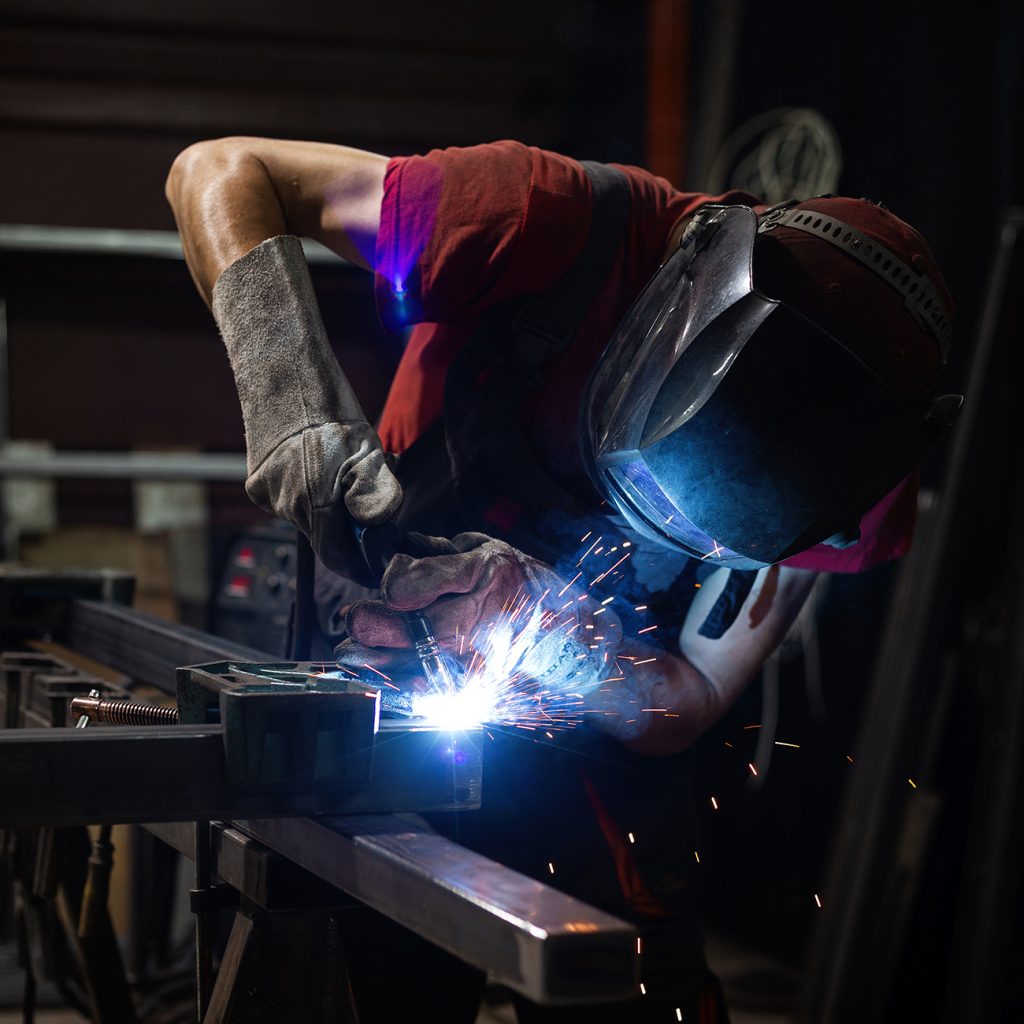Usual Welding Repair Service Issues and Just How to Address Them Effectively
Welding fixings frequently come across an array of issues that can threaten the honesty of the final item. Typical issues include insufficient infiltration, porosity, and misalignment, to name a few. Each defect provides special obstacles that require specific techniques for resolution. Understanding these concerns is crucial for welders intending to improve their abilities and results. This conversation will certainly check out these common welding repair work concerns and efficient approaches to resolve them.
Poor Infiltration
Inadequate infiltration takes place when the weld metal stops working to fully fuse with the base product, leading to weak joints and prospective architectural failings. This concern usually stems from inadequate heat input, inaccurate electrode angle, or inappropriate welding speed. Welders might experience poor infiltration due to a mistake of the necessary criteria for a details material density or type. Furthermore, contamination on the base product's surface area can impede effective bonding, aggravating the issue. To resolve insufficient penetration, welders must guarantee appropriate setups on their devices and maintain a tidy work surface. Routine assessment of welds is suggested to identify any kind of shortages early, permitting for timely corrections and the prevention of endangered structural integrity in bonded settings up.
Porosity
Porosity is an usual flaw in bonded joints that shows up as small gas bubbles entraped within the weld metal. This issue can jeopardize the honesty of the weld, leading to lowered stamina and prospective failing under stress. Montana Mobile Welding and Repair Belgrade. Porosity typically develops from contamination, moisture, or incorrect welding methods, which allow gases to get away right into the molten weld swimming pool. To attend to porosity, welders must assure proper surface prep work, keep a tidy functioning setting, and make use of ideal welding specifications. In addition, picking the right filler product and shielding gas can alleviate gas entrapment. Routine inspection and testing of welds can help recognize porosity early, assuring prompt rehabilitative actions are taken, consequently maintaining the quality and dependability of the welded structure
Misalignment
Imbalance in welding can occur from various factors, including inappropriate configuration and thermal expansion. Recognizing the root creates is necessary for effective resolution. A number of modification methods are offered to straighten parts and guarantee architectural integrity.
Root causes of Imbalance
Welding imbalance often originates from a variety of underlying problems that can endanger architectural integrity. One main reason is incorrect fit-up of elements prior to welding, which can lead to voids and unequal surface areas. Variants in thermal growth during the welding procedure can additionally cause distortion, specifically if the products being signed up with have various coefficients of development. Furthermore, inadequate clamping and fixturing may fail to hold elements safely in position, resulting in movement during welding. Inadequately kept tools, including welding equipments and tools, might present disparities in the weld bead, additional adding to imbalance. Finally, driver error, coming from inadequate training or experience, can also play a substantial role in producing misaligned welds.
Correction Methods Offered
Attending to imbalance successfully needs a mix of corrective techniques tailored to the details issues handy. One common technique is the usage of jigs or components to hold components in the appropriate setting throughout welding, ensuring consistent alignment. In addition, pre-heating the products can help in reducing distortion and enhance fit-up. For significant misalignment, mechanical adjustment techniques, such as making use of hydraulic jacks or clamps, can be used to correct the position before welding. Post-weld warm treatment might also be needed to ease anxieties triggered by imbalance. Ultimately, cautious assessment and change throughout the arrangement stage can avoid misalignment issues from coming to be considerable problems, promoting a smoother welding procedure and enhancing general structural stability.
Distortion
Distortion is a common obstacle in welding that can occur from different elements, including uneven cooling and heating. Recognizing the reasons for distortion is essential for executing reliable avoidance techniques. Resolving this concern not only enhances structural honesty yet additionally boosts the overall top quality of the weld.
Root causes of Distortion
When subjected to the intense warmth of welding, products usually undertake changes that can lead to distortion. This phenomenon primarily arises from thermal growth and contraction throughout the welding procedure. As the weld area warms up, the material increases; upon air conditioning, it gets, which can create inner tensions. Furthermore, unequal heating throughout a work surface can aggravate these anxieties, resulting in warping or flexing. The kind of product also plays a significant function; steels with differing thermal conductivity and coefficients of development may react in different ways, bring about uncertain distortions. Furthermore, poor joint layout and poor fixturing can add to misalignment during welding, boosting the possibility of distortion. Understanding these causes is necessary for effective welding fixing and prevention methods.
Prevention Techniques
Efficient avoidance strategies for distortion during welding concentrate on regulating warm input and ensuring appropriate joint style. Preserving a constant warm input aids to decrease thermal development and contraction, which can lead to distortion. Using techniques such as preheating the workpiece can also reduce the temperature gradient, promoting consistent heating. Additionally, selecting suitable joint styles, such as T-joints or lap joints, can boost stability and minimize anxiety concentrations. Applying proper fixturing to safeguard the work surfaces in position even more aids in preserving positioning throughout the welding procedure. Staggered welding sequences can disperse warm more uniformly, stopping localized distortion. By applying these techniques, welders can considerably decrease the likelihood of distortion and improve the total top quality of their welds.
Breaking
Breaking is a typical issue run into in welding repair services, typically resulting from various aspects such as improper cooling rates, material option, or poor joint preparation. The occurrence of fractures can significantly endanger the integrity of the weld, causing potential failings during procedure. To address this concern, welders must first assess the origin triggers, making sure that materials are compatible and properly selected for the details application. In addition, managing the cooling rate during the welding process is crucial; quick cooling can induce stress and lead to splitting. Appropriate joint design and preparation additionally add to decreasing the risk. Executing these approaches can boost weld top quality and durability, inevitably lowering the probability of fracturing in ended up weldments.

Incomplete Fusion
A significant concern in welding steel to aluminum welding fixings is incomplete blend, which takes place when the weld metal does not appropriately bond with the base product or previous weld passes - Belgrade Welding. This defect can cause weak points in the joint, potentially endangering the stability of the bonded framework. Factors contributing to insufficient blend include inadequate warm input, incorrect welding method, and contamination of the surface areas being signed up with. To address this problem efficiently, welders should ensure proper pre-weld cleaning and surface preparation, as well as change their welding specifications to achieve ample infiltration and fusion. Routine examination during the welding procedure can additionally assist identify incomplete fusion early, allowing for timely corrective measures to enhance the general quality of the weld
Overheating
While welding fixings can enhance architectural honesty, overheating presents a considerable obstacle that can result in material degradation. Too much heat during welding can alter the mechanical residential properties of steels, resulting in decreased stamina, increased brittleness, and bending. This sensation is specifically crucial in high-stress applications where architectural integrity is extremely important. Identifying getting too hot can involve visual examinations for staining or distortion, as well as monitoring temperature throughout the welding procedure. To mitigate the threats related to overheating, welders need to employ appropriate methods, such as regulating heat input, readjusting travel speed, and using suitable filler materials. Additionally, executing pre- and post-weld heat therapies can help bring back product properties and boost the general quality of the repair service, making certain long-lasting efficiency and security.
Regularly Asked Inquiries
What Are the Usual Signs of a Welding Defect?

Just How Can I Test My Welds for Quality?
To examine welds for quality, one can use visual assessments, ultrasonic testing, and radiographic approaches. Each strategy ensures structural stability, determines flaws, and verifies adherence to specified requirements, eventually enhancing the reliability of the welded joints.
What Safety Precautions Should I Take While Welding?
When welding, one need to focus on safety by putting on suitable personal protective devices, making sure correct air flow, securing combustible materials away, keeping a clean work area, and knowing surroundings to avoid injuries and mishaps.
Can I Fix a Weld Without Redoing the Entire Joint?
Repairing a weld without remodeling the whole joint is feasible, depending on the damages (Montana Mobile Welding and Repair Welding). Methods such as grinding, including filler product, or making use of a welding procedure can efficiently address particular imperfections while protecting the surrounding structure
What Tools Are Important for Reliable Welding Fixes?
Necessary tools for reliable welding repairs include a welding device, wire brush, grinder, protective gear, clamps, and filler products. Each device plays an essential role in making certain quality and safety throughout the pop over here repair process. Porosity generally occurs from contamination, dampness, or incorrect welding strategies, which allow gases to escape right into the molten weld swimming pool. Badly conserved tools, consisting of welding makers and tools, might present disparities in go right here the weld bead, further adding to imbalance. When subjected to the extreme warmth of welding, materials typically undertake modifications that can lead to distortion. Cracking is a typical problem run into in welding repair services, usually resulting from numerous elements such as inappropriate cooling prices, product selection, or inadequate joint preparation. A substantial problem in welding repair work is insufficient blend, which happens when the weld metal does not appropriately bond with the base product or previous weld passes.